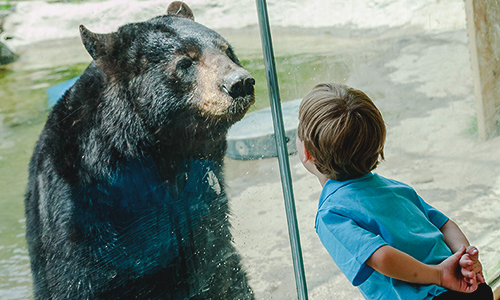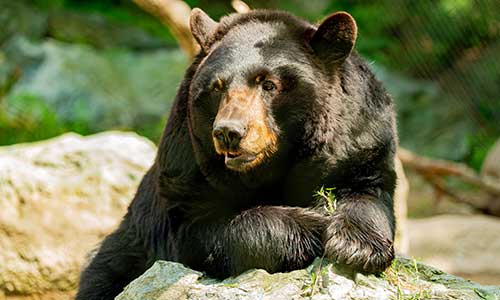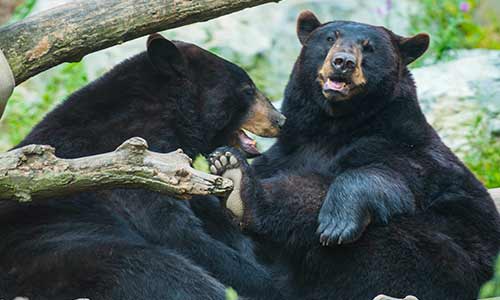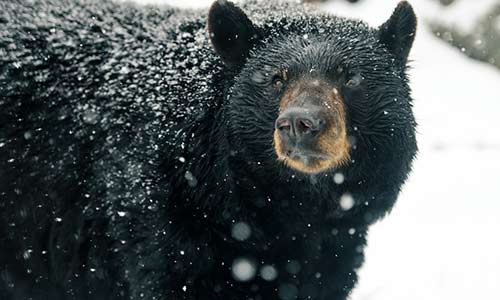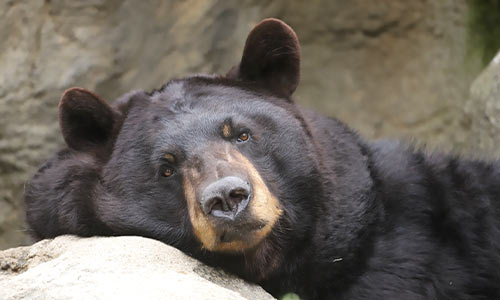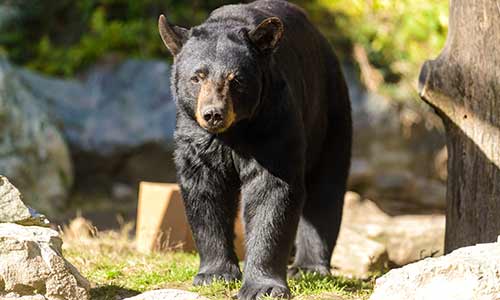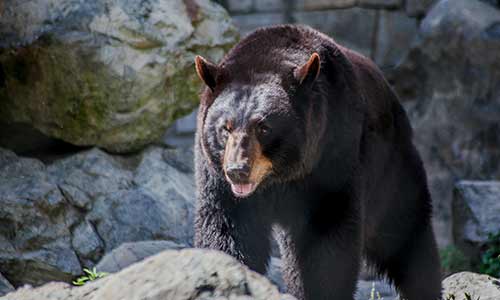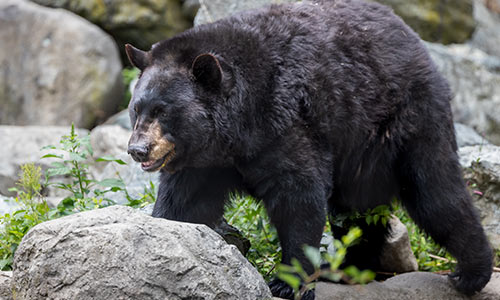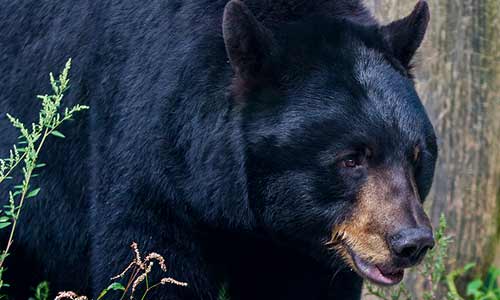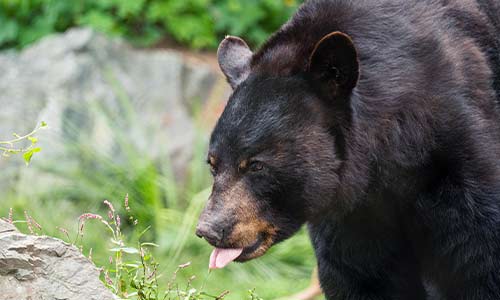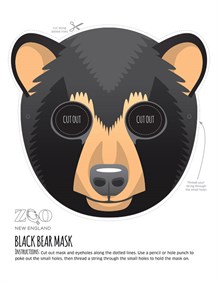Black Bear
Ursus americanus
About the Black Bear

Geographic Range:
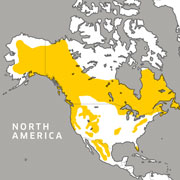
Class: Mammalia
Order: Carnivora
Family: Ursidae
Genus: Ursus
Species: americanus
Though most black bears have black coats, in Western North America “black” bears can be cinnamon, blond, white (“spirit bears”) or blue in color. Bears communicate with body and facial expressions, sounds, touch and scent marking. They see in color and have excellent close up vision, hearing and sense of smell. Black bears also seem to have excellent short- and long-term memory. Considered a medium-sized bear, they're the smallest in the Americas, weighing up to 600 pounds, with females considerably smaller at 200 pounds.
Black Bear Facts
Appearance:
Most black bears have black coats, but in western North America cinnamon, blond, white (spirit), and blue (glacier) colored “black” bears occur. They can be distinguished from Grizzly or Brown bears by their longer and less heavily furred ears and smaller shoulder humps. Black bears see in color and have excellent close-up vision, hearing and sense of smell. They also seem to have excellent short-term and long-term memory. These bears have strong, curved, non-retractable claws, which make it easy for them to climb trees and tear bark from trees in search of insects.
Size:
Black bears are the smallest of the three bear species in North America. They vary in size depending on food availability and sex, but they’re usually approximately 6 feet long and 3 feet tall at the shoulder.
Male: 450 pounds is average, up to 600 pounds
Female: 175 – 200 pounds
Diet:
Black bears are omnivorous. They eat vegetation including twigs, roots, berries, young plants and buds. They also eat insects like beetles, ants, and bee larvae laden with honey, as well as fish and mammals. The search for foods high in protein and fats often attracts them to human food and garbage.
Bears can go without food for up to seven months during hibernation in far northern ranges.
Reproduction:
Black bears breed during early summer months. Females mature at 3 years of age and give birth every other year. Males mature sexually between 3 and 4 years of age but continue to grow until 10 or 12, at which time they’re large enough to dominate younger males without fighting.
Gestation lasts approximately 220 days, but delayed implantation occurs in the late fall, meaning the embryo doesn’t immediately implant in the uterus to time birth to favorable conditions. Actual embryonic development is only 10 weeks, and cubs are born in mid-winter in the female’s den. The average litter size is two cubs, weighing between one-half pound and 1 pound at birth. Babies stay with their mother for about a year.
Behavior:
Bears communicate with body and facial expressions, sounds, touch and scent marking. Except for females with cubs, bears usually forage for food alone and wander their territories, which are large enough to provide sufficient food. Adult males generally don’t tolerate other bears except during breeding season. However, when food sources are abundant in one area, large numbers of bears—both male and female-- occasionally congregate and form a social hierarchy. Black bears are usually most active in the early morning and evening hours, but in areas of heavy hunting they adapt to night hours.
Black bears are highly intelligent and adaptable. They have a great capacity to live in close proximity to humans.
Role in Their Habitat:
Adult bears are large omnivorous predators, with few enemies except humans. The black bear population is thriving in North America with estimates of 300,000 to 500,000 currently living in the wild in the U.S. In isolated states, like Florida, Louisiana, Texas, and Mississippi, they’ve been listed as threatened, due mainly to habitat loss and road kill.
Habitat/Range:
Black bears are very adaptable and inhabit a wide range of habitats, including dense coniferous and deciduous forests in the eastern and western U.S., arid scrub land, and southern U.S. swamps.
Life Expectancy:
25 - 30 years. In the wild, many bears don’t live beyond the age of 10 due to trapping, hunting, motor vehicle accidents and punishment for nuisance activity. Cubs are often prey to larger predators, like male bears, wolves, mountain lions and humans.
Fun Facts:
- Black bears are the most common of all the bear species with population numbers double that of all the other bears species combined.
- Despite its size and usual lumbering gait, the black bear can run quickly, climb trees and swim.
Zoodopt a Bear
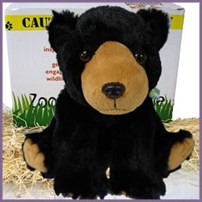 Zoodopts support the care and feeding of our animals, and with each purchase, we'll bring a little of the Zoo to you!
Zoodopts support the care and feeding of our animals, and with each purchase, we'll bring a little of the Zoo to you!
Zoodopt today!
You Can Find This Animal in the Yukon Creek
You might also like
At Franklin Park Zoo:
At Stone Zoo:

